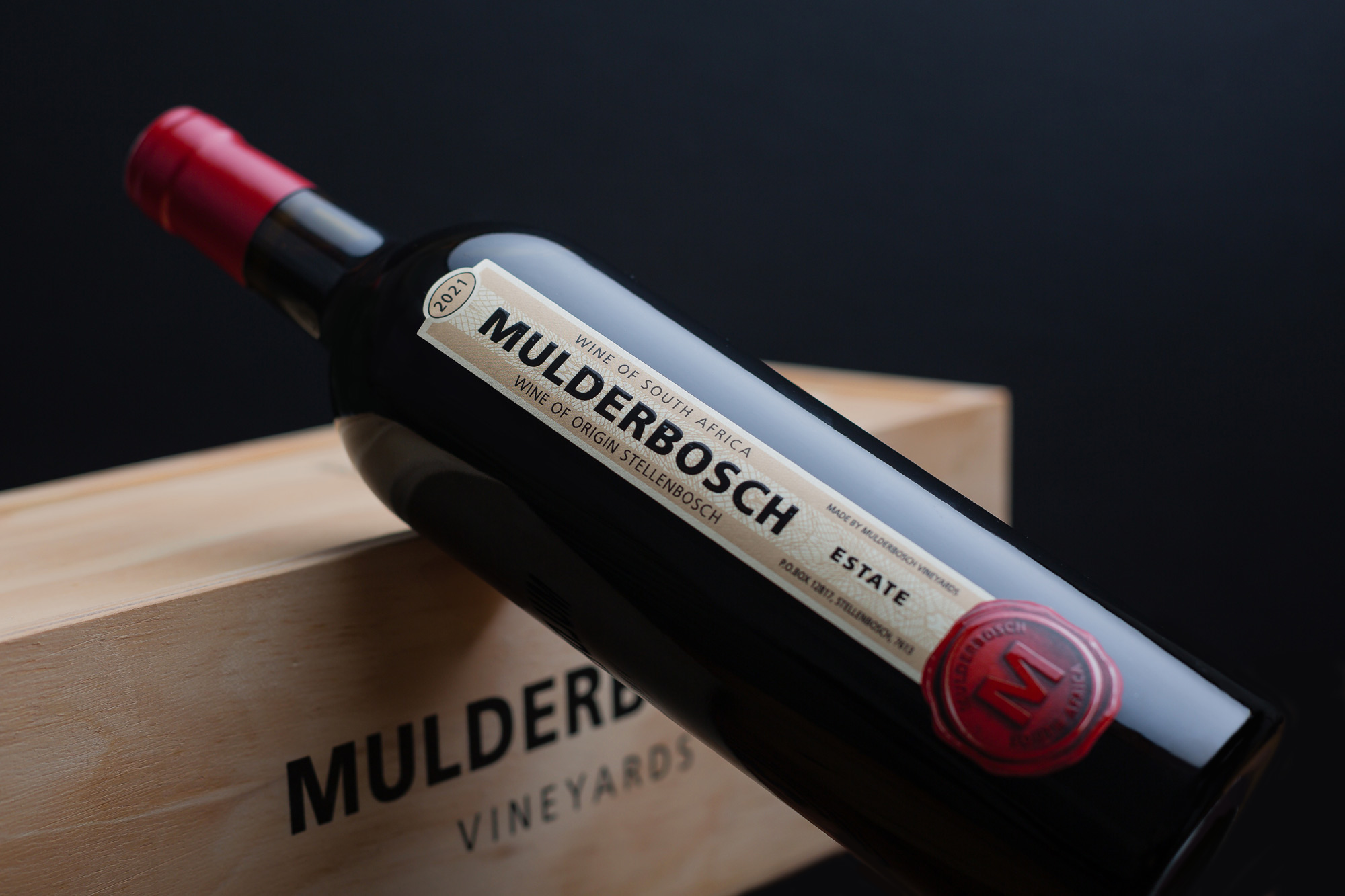As you know, at Mulderbosch, the accent has always been on white wines. This focus has served us well with many accolades for both red and white over the years from platforms such as Wine Spectator, Platter’s South African Wine Guide, Tim Atkin’s South Africa Report TEXSOM, Decanter, as well as critics such as Stephen Tanzer, Neal Martin and more.
But for a while we’ve been feeling it’s time to make more of our red vine assets right here on the farm.
Enter our just-released statement red blend, the maiden 2021 Mulderbosch Estate Red. It’s the first wine in our 35-year history to be estate-certified. Styled as a serious wine, it calls attention to the excellence of our very own farm-grown red grapes.
Polkadraai Hills with its granitic koffieklip soils and deep clay substructure is rightly renowned for Cabernet Franc. It’s why it takes the lead at 44% in our new hero offering. The variety imparts structure, power, but also purity of fruit and perfume, and is complemented by the lively black and red fruit and herbal characters of Petit Verdot (31%) and the surprising heft but also soft texture from the Merlot (25%).
At the time of picking these vines averaged around 12 years in age, beautifully balanced, in great health and truly expressing their potential.
But wait a minute. Aren’t all our wines sourced from Mulderbosch? Our grapes are from Stellenbosch but not all necessarily from the farm. The multi-faceted region offers us a spectrum of grape varieties and varietal fruit expression to add depth and complexity to our wines. It’s an approach that also gives us access to enough fruit to meet rising international demand for our wines.
I can confirm that except for our still and sparkling rosé wines (that include some Swartland grapes), our Polkadraai Hills farm has always supplemented the harvest with other Stellenbosch grapes.
Back to the 2021 Estate Red. When I joined Mulderbosch Vineyards after the 2020 harvest, I already knew about the outstanding white vines on the farm, but I was blown away by the quality of the reds. Encountering the Cabernet Franc, I just knew we were ready to make more of its potential. The success we’ve already had with our single vineyard Cabernet Franc bears testimony to its excellence. But it seemed to me this beautiful fruit was also just begging to be part of a gracefully layered blend and we were already blessed with superb Petit Verdot and Merlot grapes. So, why not?
We got right down to it. Each component was individually vinified and aged for 12 months in a combination of new (30%) and older oak before blending. The assemblage spent another four months in wood before bottling.
I’ve aimed for a classic Bordeaux-style profile – fresh and elegant but with a vivid expression of black and red berry fruits, reined in by fine-grained tannins. I think the wine is drinking very well now but it is structured to age over many years.
I’m very proud of the pre-release response it’s met. For example, UK wine writer Tim Atkin describes it as “polished, layered, detailed and self-assured”. The Platter’s South African Wine Guide is calling it “very impressive yet controlled”.
Comments like these certainly validate our decision. But I do want to mention that its annual release is not guaranteed. We plan to make it only when the vintage delivers exceptional fruit. (By the way, 2022 is shaping up very well. Ditto, 2023. Please keep your fingers crossed for 2024. These grapes should come in fairly soon.)
Like most of our Mulderbosch wines, the Estate Red bears the iconic, vertical strip label that has earned us widespread brand recognition in South Africa, the US, Canada, the UK, Europe and other select markets where we sell.
In case it comes up, you’ll want to know what distinguishes it from the Faithful Hound, a blend that features the same three Bordeaux grapes, along with Cabernet Sauvignon and Malbec. In a word: gravitas. It’s a serious, commanding wine for cellaring. Faithful Hound on the other hand, is more of a steadfast companion to keep loyally at your side. After all, it has twice been featured as a Wine Spectator Top 100 wine.
And what’s the story with the single vineyard Cabernet Franc? Shouldn’t it be estate-certified? It should. And it will be, from the 2022 vintage. The fruit is ours and always has been.
– Henry Kotzé

